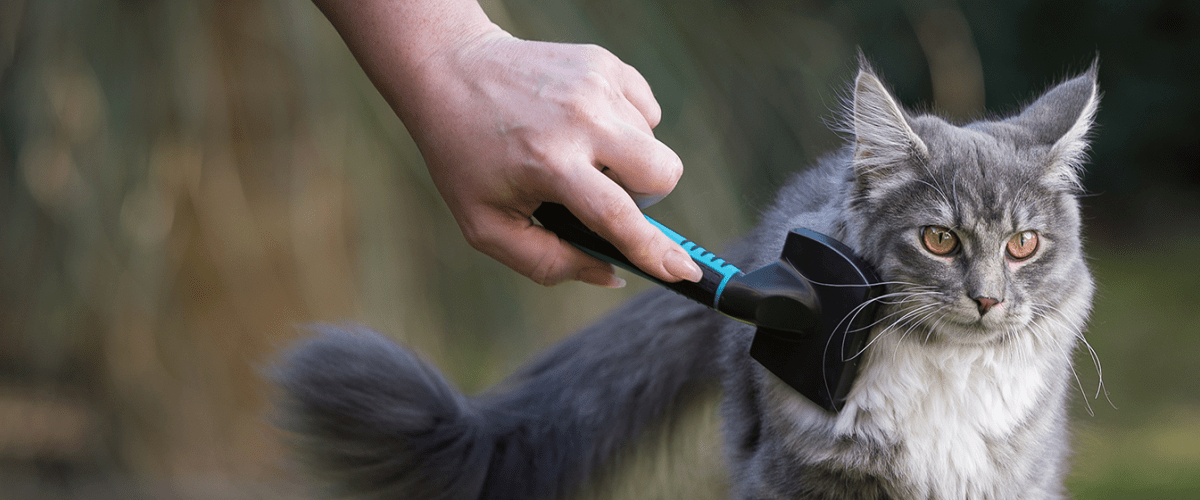
April 27, 2023 – For cat owners, there’s nothing quite like accidentally stepping on a hairball (technical term – trichobezoar) in the middle of the night. If you’ve got a cat, you’ve got hairballs.
Hairballs, as the name implies, form from hair swallowed as a cat grooms itself. Most of these undigested bits are eliminated in the litterbox, but nature has a backup plan in case that doesn’t work. Cats can regurgitate undigested fur wads too big to pass into the intestines; a safety mechanism to prevent blockage of the intestines. So, while hairballs/trichobezoars can be gross, they just come with the territory when living with cats.
Here are 10 things you may not know (or may never want to know) about those lovely hairballs:
- Slimy hairballs are a good thing. The moisture that encapsulates the hairball is a combination of mucus and digestive fluids that provide a smoother journey for the hairball up through the digestive tract. It makes regurgitation more comfortable for the cat!
- Licking and grooming all the time is not a good thing. Overgrooming is a sign of anxiety in cats and may cause bald patches, skin sores and, yes, more hairballs. When cats lick themselves, they release endorphins, the happy chemicals in the brain. If a cat is stressed, overgrooming may be its way of self-comfort. A veterinary behaviorist can offer some helpful advice to calm your anxious cat.
- Overgrooming also can be a sign of allergies or some other underlying health problem causing irritation. Licking is a cat’s way of dealing with an annoying sensation. Seek veterinary care to rule out any health issues.
- Hairballs come in all sizes. Usually about an inch long, size doesn’t matter as long as the hairball comes up and out. The record holder in the cat hairball world stands at about 10+ inches long and, yes, this is abnormal!
- The occasional hairball is normal, even as often as once every few weeks. However, hairballs that turn up more frequently might mean your cat has an underlying health issue. Check in with your veterinarian to make sure it isn’t something more serious.
- Hairballs can become a health emergency. Sometimes hairballs get stuck in the digestive tract. If your cat is repeatedly trying to throw up with nothing coming out, is lethargic, has constipation or diarrhea, or refuses to eat, seek veterinary help immediately. These symptoms could indicate a life-threatening blockage and the hairball may need to be surgically removed to save your cat’s life.
- Brush your cat often, especially long-haired kitties. You can greatly reduce the amount of hairball presents you will find around the house and maybe avoid a hairball emergency!
- Don’t confuse regular coughing with trying to cough up a hairball. Cats will crouch and extend their necks in the same way (and make identical sounds) when simply coughing or trying to regurgitate something like a hairball. If nothing comes out when they assume this retching posture, they may be coughing and have a respiratory problem. Vomiting would indicate a gastrointestinal problem.
- Special hairball diets are available. Check with your veterinarian to see if a change in diet or supplements will help your hairball-excessive cat.
- Dogs occasionally can chuck up hairballs too, but it’s extremely rare. If you find a regurgitated fur mass from your dog, check with your veterinarian to make sure your pooch is okay. Don’t always blame the cat.
Regurgitating hairballs is what cats are designed to do. While they may look gross, they actually keep your cat healthy and help to avoid intestinal blockages.
Sign up for stories and news with Morris Animal Foundation’s monthly AnimalNEWS Tips & Tails to learn more ways to keep your cat happy, healthy and purring… with hairballs in check.
MORE RESOURCES:
10 Tips for a Happy, Healthy Cat
When Your Cat is Coughing – What Does it Mean?
10 Things Your Cat Wants You to know
Understanding Problem Behaviors in Cats – Fresh Scoop Podcast
Feline Behavior Myth Busting – Fresh Scoop Podcast




